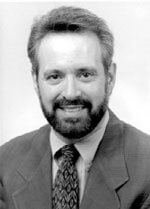Ronald Valdiserri stresses prevention challenges in complacent era
“My personal opinion is the answer to that is no,” said Dr. Ronald O. Valdiserri, deputy director at the National Center for HIV, STD and TB Prevention at the Centers for Disease Control and Prevention. “The AIDS groups are struggling with how to retool and refocus HIV prevention messages and efforts in this new era that we find ourselves in.”
In this new era, the CDC is reporting increases in syphilis for the second year in a row, with most of those new cases among gay and bisexual men.
This past December, an agency study said that HIV diagnoses among men who have sex with men in 29 states rose 17 percent from 1999 to 2002.
That data excluded places with large gay communities such as the nation’s capitol, New York, California, Illinois, and Texas. It is doubtful that the picture would improve if those locations were included.
In February, the CDC will report on incidence rates, or the percentage who are newly infected in a year, among gay and bisexual men who participated in an HIV vaccine study. All of these men received HIV prevention counseling during the study.
“What I can tell you about it, generally, is that it is showing high rates of continued infection despite intensive counseling,” Valdiserri said during an hour-long interview with Gay City News on January 13.
One problem that AIDS groups face is that, with new treatments, AIDS is no longer seen as a killer. In the 1980s, an HIV diagnosis was perceived as, and it often was, a death sentence. The disease no longer inspires as much fear.
“The perception of risk has changed and that definitely has some level of influence on people’s attitudes,” Valdiserri said. “This shift in attitudes has been strongly associated with increases in unsafe behavior.”
A desire for intimacy or to feel masculine can move gay men to have sex without condoms. Drugs, alcohol, and depression can play a role in unsafe sex.
But there is also a general complacency, perhaps even denial, in the community.
In late 2001, Valdiserri talked about complacency with Lesbian and Gay New York, now Gay City News.
“We want to make sure that issues related to HIV prevention continue to be discussed in a productive manner and not letting people revert to the most simplistic explanation that HIV prevention doesn’t work,” he said just over two years ago.
Have attitudes improved since then?
“Certain elements in the community across the U.S. are very concerned about this,” Valdiserri said on January 13. “They tend to be gay men who are working in the fields of public health or substance abuse or medicine… There are other dimensions of the community that have not been brought into the dialogue.”
There are some signs that community concern is rising. Here in New York City, Dan Carlson and Bruce Kellerhouse, two gay men, organized a November 16 town meeting on HIV and gay men that drew hundreds of people. They will produce three more events this spring with the next one, on crystal meth and HIV, scheduled for early February.
In Seattle, a group of gay men and health workers produced a community manifesto that set out standards of sexual behavior. Among a number of items, it calls on HIV-positive men to always disclose their status and it referred to the knowing transmission of HIV as “an act of violence.” The document has spawned a rancorous debate within the AIDS community in Seattle.
Valdiserri approved of the manifesto and added that any HIV prevention efforts must take care to not attack people who are HIV positive.
“When you look at the manifesto… talking about the importance of taking responsibility for not transmitting HIV and other STDs we think that’s a very positive approach,” he said. “We do need to be careful about not inadvertently stigmatizing people who live with HIV, but we would say clearly that people who have HIV, and who are under care, do have a responsibility not to transmit that virus.”
But this new era also includes strained government budgets and shrinking private dollars as well as a Republican-controlled Congress that keeps a watchful, some say hostile, eye on federal AIDS funds.
The demand for dollars was illustrated by a CDC grant announcement from late 2003. The agency will divide $49 million among less than 200 AIDS groups, but 1,200 agencies have told the CDC they will apply for some of the cash, Valdiserri said.
At the same time, the CDC is asking for more from the AIDS groups. The grants will require the funded community based organizations to set goals and prove that their efforts are effective.
“What we are trying to do is move beyond AIDS 101, pass out a brochure,” Valdiserri said. “We are trying to standardize prevention interventions to make sure that they have the highest likelihood of success. I do think this particular announcement is in many ways more directive than some in the past.”
Many of these organizations have been doing HIV prevention among gay men as HIV rates and syphilis have been increasing in that population. That raises another question: Is the CDC being directive enough with AIDS groups? Valdiserri said the December announcement was “appropriate,” but it “may not be the last word.”
Valdiserri said that there was also “good news” about HIV and gay men. We know what works.
“The good news is that it’s not like we’re defenseless,” he said. “We do have information on certain approaches that we think will work, but government can’t do this in isolation. Government has to have strong support from the community.”

































